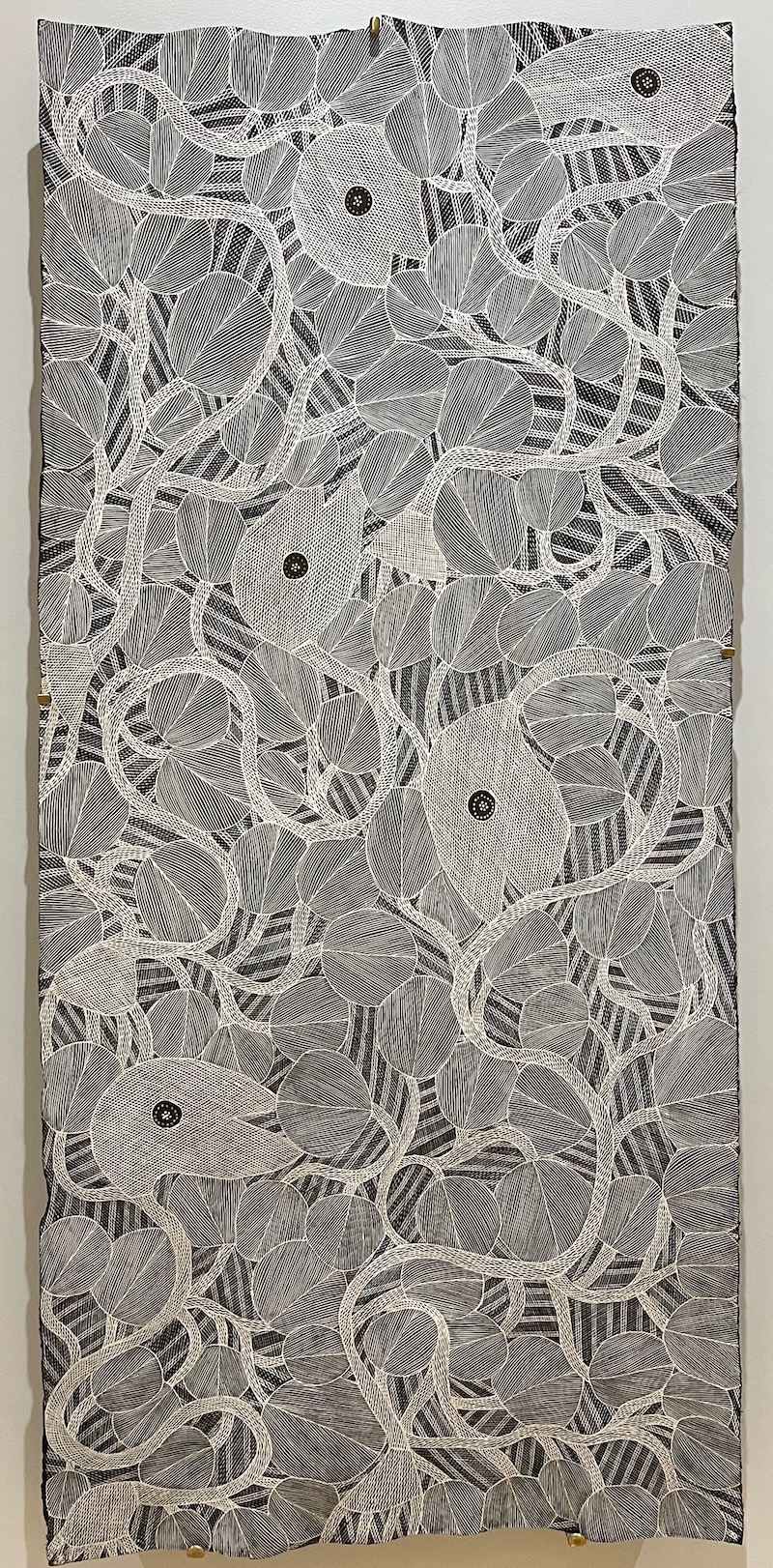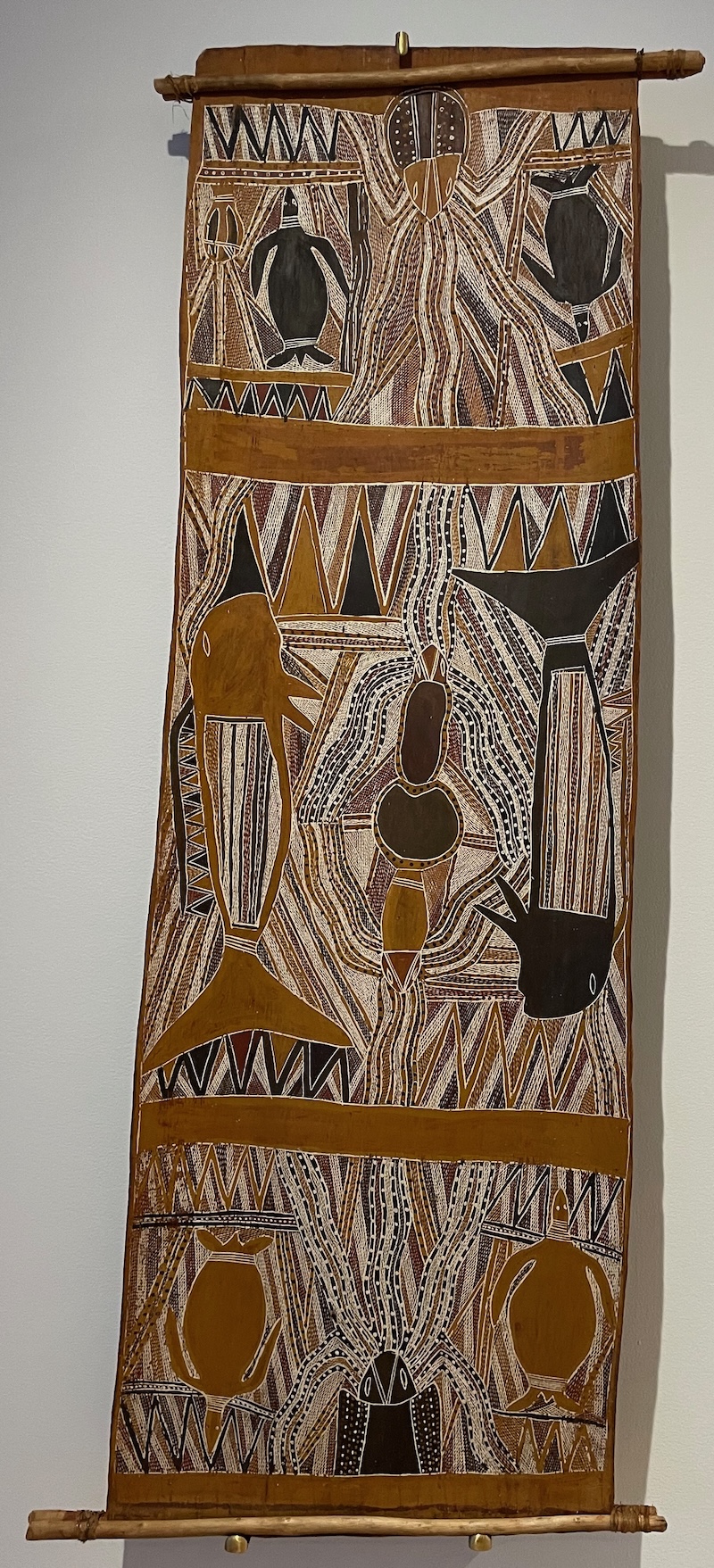Aboriginal art in New York
We’re on holiday in New York, and I happened notice an ad on the subway for an exhibition of Australian Aboriginal artwork. We ended up going and spent over two hours in what was just two rooms of paintings on eucalyptus bark.
There’s something incredibly powerful about Australian Aboriginal artwork, and I notice a lot of parallels with Buddhism. Artwork is done in a sort of ecstatic trance that gives access to a more purified form realm not entirely dissimilar to jhāna.
The artists say that outsiders will understand very little of the imagery and symbolism. The most we can do is have a bit of a superficial understanding of the culture and an aesthetic appreciation of the art as art. This also is similar to Buddhist art. The complex imagery, symbolism, and cosmology is little appreciated by non-Buddhists, even if they value the beauty of a Khmer temple or Tibetan mandala. Real knowledge is passed on from teacher to disciple in an oral tradition that’s hard for outsiders to follow and fully appreciate.
This sort of art challenges the basic assumption of Western rationalism that we can know everything. We can’t. And in fact, this art movement began as a political statement along these lines.
Another common thread with Buddhism is that many Aboriginal cultures speak of a universal natural law. This is akin to the pan-Indian concept of dharma.
This may well be the best thing I’ve seen in New York thus far. The energy of such a multi-cultural city makes it possible to bump into stuff like this, and, honestly, Amsterdam feels sleepy and provincial in comparison.
I’ll leave you with some of my favorite works from the exhibition. Although, these pictures don’t do justice to either the details nor the feeling when standing across the room.
This is ostensibly a painting of just waterlilies, and because the artist was a woman who wasn’t authorized to draw sacred themes, she insisted she painted just waterlilies. Naturally, when the men of the tribe looked at the painting, they saw all of the sacred motifs hidden among the waterlilies.

Similarly, this is a painting of the stars, officially without the sacred motifs, offered as something shared by all of humanity:

Then there was the more familiar Aboriginal style:

It’s worth noting, that these are from a different cultural area than the more widely known Western Desert paintings of Papunya Tula, which I’ve previously written about in the context of oral history.